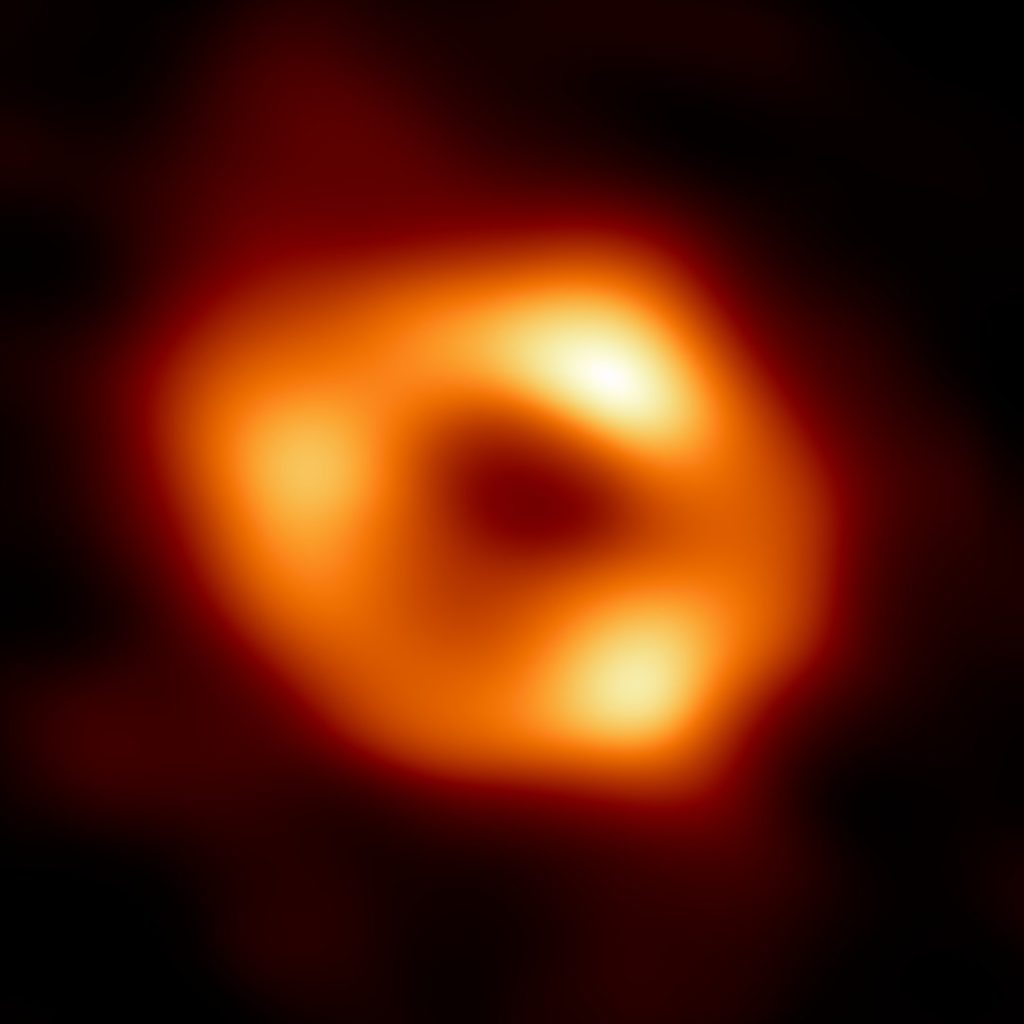
I learned this today. Astronomers believe that there is a black hole at the center of every galaxy.
In May of 2022, astronomers released photographs of the black hole at the center of our Milky Way galaxy, which is called Sagittarius A*. It is a supermassive black hole, and it is estimated to be 4 million times larger than our sun. On the spectrum of supermassive black holes, Sagittarius A* is not that large. The only other supermassive black hole that has been photographed is M87*, which is at the center of the Messier 87 supergiant elliptical galaxy. M87* could be as much as 6 billion times larger than our sun. This makes sense because the Messier 87 galaxy is much bigger than the Milky Way, containing trillions of stars.
The Milky Way galaxy has approximately 400 billion stars, of which our sun is just one. We know that every object with mass has gravity and attracts other objects. Just like the moon orbits Earth and Earth orbits the sun, all of the stars in the Milky Way orbit the Milky Way at the center. It takes Earth 365 days to orbit the sun once. It takes the sun approximately 250 million years to orbit the Milky Way once.
The photo of the black hole at the center of the Milky Way doesn’t actually show the black hole because you cannot see a black hole. Light cannot escape it, which is why it is called black. What is visible in the picture is the accretion disk. The black hole has a tremendous gravity which pulls in gas and dust in the area around it. This material rushes in at close to the speed of light and friction causes it to heat up. It emits this energy as electromagnetic radiation and x-rays, which can be detected. These radio waves are then analyzed to gather information about the black hole and to make the picture.
So, is there a blackhole at the center of every galaxy? The answer is probably yes. At the center of most galaxies that can be observed is something that is releasing a trillion times the energy of a regular star but in a space the size of our Solar System. The only thing that can do this is a supermassive black hole. They convert gravitational energy into light, releasing staggering amounts of energy. Another point of evidence is the velocity of stars that are close to the center of the galaxy. They have very high velocities that can only be explained if the object at the center is extremely massive and extremely small at the same time. The only thing that can be massive and small is a supermassive black hole.
However, the interesting thing to think about is that the galaxies don’t orbit around the black hole. The stars in the galaxies orbit around the galaxy’s center of mass and the black hole just happens to be located where the center of mass is. Sagittarius A* is about 6 million solar masses large and the Milky Way weighs about 1.5 trillion solar masses. That means Sagittarius A* is approximately 0.0004% of the weight of the Milky Way. Black holes obviously have tremendous mass, but that is not enough to make the whole galaxy orbit. It is far more likely that the black hole is simply at the center. The Milky Way orbits around the center of its own mass. If Sagittarius A* suddenly disappeared, the Milky Way would continue to orbit in exactly the same way.
So, why would a black hole be at the center of every galaxy? Well, it could have been there from the beginning and seeded the galaxy. Dust and gas could have been sucked into the black hole and the Milky Way galaxy could have been formed from the matter that didn’t get sucked into the black hole.
Another explanation seems to be that the black hole formed from the matter within the galaxy. In the same way as everything gets washed down the sink when you pull out the plug, matter in the Milky Way could slowly accumulate into the very center. If stars start to collide and combine their mass, they could form a black hole.
Or, a small black hole could have formed and then grown bigger as it absorbed more matter that was pouring in. Nobody really knows the reason.
There are some galaxies that don’t have black holes. However, it appears that these galaxies have had a collision with another galaxy at some point. If two galaxies pass very close to each other, the strength of the gravity can fling one of the black holes out into space. In 2012, a supermassive black hole travelling at 4.8 million km/h through space was discovered. I wonder where it will end up.
So, nearly every galaxy has a black hole at the center of it. These black holes come in different sizes, but none of them are large enough for the galaxy to orbit around them. Most likely, they have simply formed at the gravitational center of the galaxy. And this is what I learned today.
Photo By EHT Collaboration – https://www.eso.org/public/images/eso2208-eht-mwa/ (image link), CC BY 4.0, https://commons.wikimedia.org/w/index.php?curid=117933557
Sources:
https://astronomy.stackexchange.com/questions/32510/does-the-milky-way-orbit-around-anything
https://www.sciencefocus.com/news/sagittarius-a-star-black-hole-photo/
https://en.wikipedia.org/wiki/Supermassive_black_hole
https://en.wikipedia.org/wiki/Sagittarius_A*
https://science.nasa.gov/astrophysics/focus-areas/black-holes
https://en.wikipedia.org/wiki/Accretion_disk
https://www.sciencefocus.com/space/are-black-holes-always-found-at-the-centre-of-galaxies/
https://www.sciencefocus.com/space/black-holes-in-the-centre-of-galaxies/
